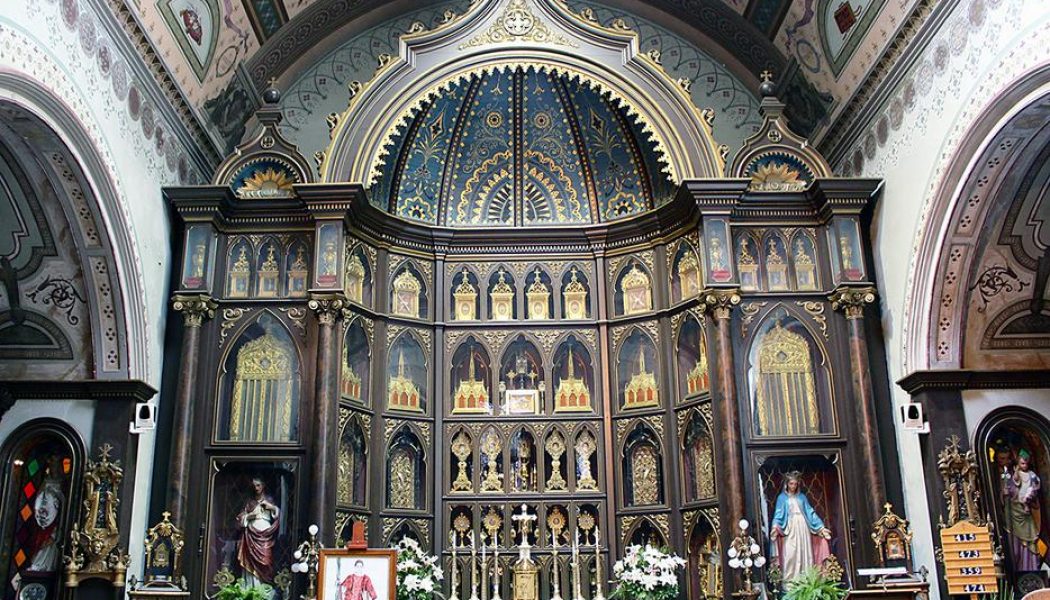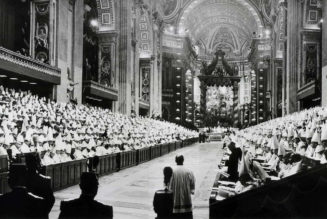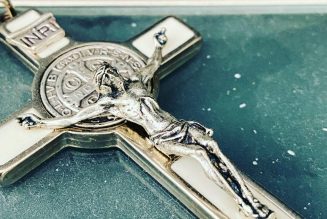
At St. Anthony’s Chapel in Pittsburgh, the dead lie round — more than 5,000 of them.
It sits at the top of the hill, on the street running along the ridge. It crowns a typical Pittsburgh neighborhood, Troy Hill, with houses close together and narrow streets with cars parked on both sides, a few corner shops and bars, a big brick Catholic church called Most Holy Name of Jesus. It’s not a neighborhood you’d ever visit by accident or just drive through on the way somewhere else.
And it includes one of the most extraordinary places I have ever been.
St. Anthony’s Chapel contains more than 5,000 relics, said to have more than any place in the world outside the Vatican. And maybe more than that, I’m thinking. I can’t find any information on how many relics the Vatican has, but even St. Peter’s Basilica doesn’t have many. The chapel almost certainly offers the highest concentration of relics per cubic foot anywhere.
It has been covered by the Smithsonian magazine the interesting-places site Atlas Obscura, tourist sites such as TripAdvisor, and of course the Catholic News Agency and the Register. The chapel has its own website and Facebook page.
In the middle of the 19th century, a German doctor named Suitbert Mollinger came to the U.S. where he was ordained to the priesthood. In 1868, he became pastor of the parish on Troy Hill. Said to have the gift of healing Father Suitbert set up a medical clinic at his parish, in which he used the relics he had started gathering to help those who came to seek healing. Many relics were being taken from European churches and monasteries, as revolutionary movements shut them down and put the relics up for sale. He saved some himself and had agents save them and send them to him. With the profits of medicines he’d invented, he built a special church to house them.
Two dear friends were recently married at St. Anthony’s, and it seems about the coolest possible place to get married. That reminded me of how long it took me to visit the chapel, even though it’s only 25 minutes away, and my own sadly delayed discovery of the beauty and use of relics.
When I and my family entered the Church, several Catholic friends urged us to go to St. Anthony’s Chapel right away. We didn’t — mostly because, prior to my conversion, I spent several years working in an Evangelical seminary where I’d been worn down by what I call “hyper-supernaturalism.” According to this understanding of grace, God couldn’t just work in your life in quiet ways. He had to be doing Big Things, exciting things, things the world would recognize as major events. Even finding a good parking space at the store was regarded as a sign of Divine favor. According to the hyper-supernatural view of reality, something was wrong with you if God wasn’t constantly doing Big Things in your life.
The way some of my new Catholic friends talked about the chapel, it sounded like the Catholic version of the same impulse. A different kind of hyper-supernaturalism, but still, the same desire for the Big Thing. I smiled and nodded, and didn’t go.
I was wrong. I can kick myself now for not going right away. The Faith of the Church had drawn me in because it felt so objective and so practical, working on us in the ways human beings are normally changed. It was deeply supernatural, but not hyper-supernatural. We do see miracles. As St. John Henry Newman writes, “the Catholic Church, from east to west, from north to south, is, according to our conceptions, hung with miracles.” But mostly we progress step by step in the natural way of things. The Church doesn’t need Big Things to show God’s power.
I love the idea of the sacraments, and the way the Mass is tied to the everyday life of prayer and service and sacrifice. I also love the idea that the Church understands the Eucharist as a medicine and a food, not as a miracle cure. These truths played a vital role in my conversion. I was also drawn to Catholicism by the fact that the Church sees confession as a bath, not as a new paint job that would never get dirty.
After half a minute during my first visit to St. Anthony’s, I knew that relics expressed that same spiritual life that had drawn me to the Catholic Church. It wasn’t a Big Thing in the hyper-supernatural sense I reacted to. It was a Big Thing that went on quietly and steadily and gently. The saints through their relics worked (most of the time) without drama. Here were some 5,000 of these saints, each at our service, eager to do us good, just waiting for us to ask. You can feel their presence, not the way you feel a blast of wind, but the way you feel warmth when you come inside on a bitter cold day.
The English poet Philip Larkin was a very secular man, and not a model human being, but he sensed something in Christianity beyond what the world offers. In his poem “Church Going,” he wanders into a country church with a graveyard outside. It’s the kind of place you’d expect, old and dark and in disrepair. “A serious house on serious earth it is,” he writes at the very end:
And that much never can be obsolete,
Since someone will forever be surprising
A hunger in himself to be more serious,
And gravitating with it to this ground,
Which, he once heard, was proper to grow wise in,
If only that so many dead lie round.
At St. Anthony’s Chapel, the dead lie round, more than 5,000 of them. It is a place proper to grow wise in. But they’re not dead. They live.
For more info:
- newmanreader.org/works/england/lecture7.html
- vatican.va/roman_curia/congregations/csaints/documents/rc_con_csaints_doc_20171208_istruzione-reliquie_en.html
Join Our Telegram Group : Salvation & Prosperity








